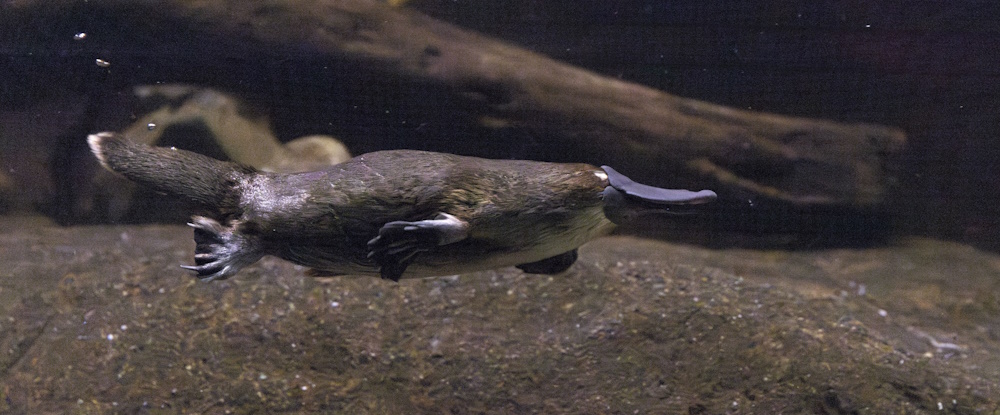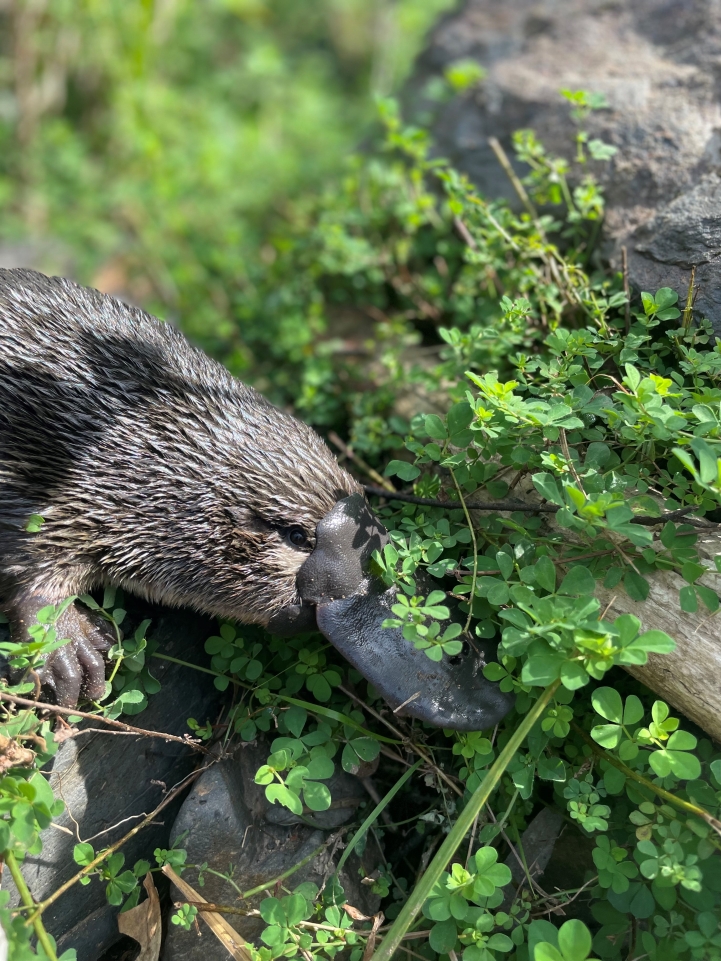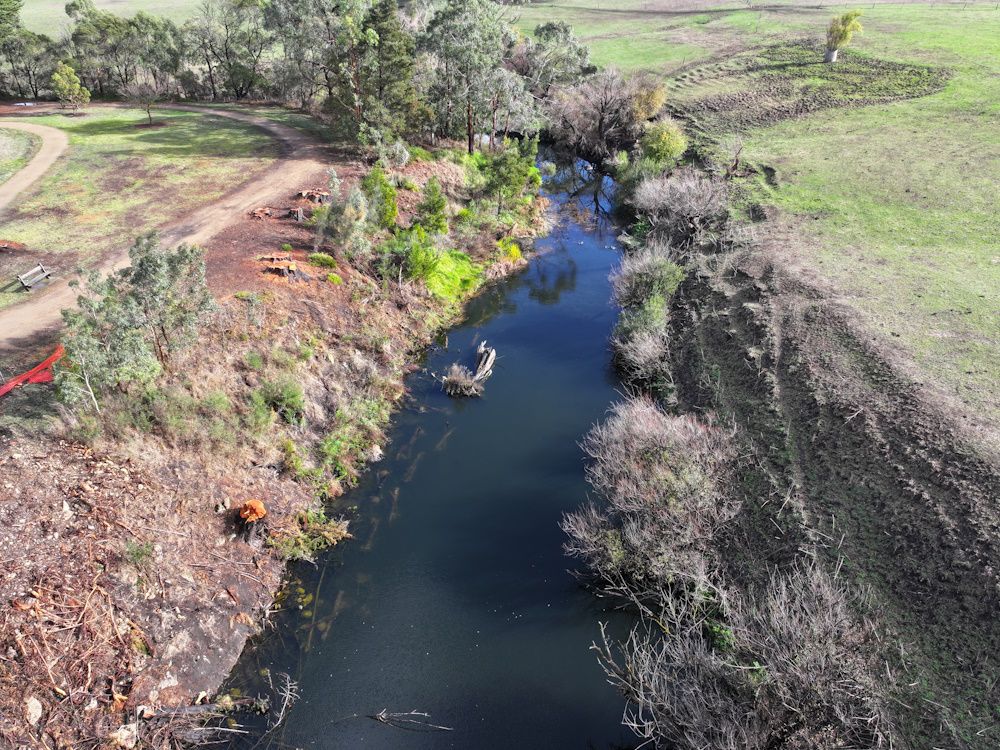In short
|

Platypus at the Melbourne Zoo - photo by Zoos Victoria
Platypus are under threat
Platypus are found across much of Victoria, but their numbers are declining—especially in urban and agricultural areas. In 2021, Platypus were listed as vulnerable in Victoria under the Flora and Fauna Guarantee Act 1988.
Platypus typically live in waterways with:
- stable banks for burrowing
- intact streamside vegetation
- aquatic invertebrates for food
- complex aquatic habitats (including woody structures)
- reliable, sufficient water flows.
Human activities are putting pressure on Platypus habitats. Dams, weirs, and reduced surface water can fragment populations, making them more vulnerable to local extinctions after floods and bushfires.
Research is helping us to better understand the life history and population dynamics of Platypus. This includes aspects of their reproduction, dispersal, distribution and genetic diversity. However, Platypuses are inherently difficult to study due to their elusive nature and primarily nocturnal activity pattern.

Platypus near Buffalo River - photo by Dr Jarod Lyon
What we are doing
ARI is coordinating Platy Patch, a landmark four-year statewide initiative, co-funded by the Australian Government, Victorian Government, and Melbourne Water.
The project aims to improve streambank and aquatic habitats for Platypus. It also benefits other threatened species and vegetation communities.
Platy Patch is focusing on 14 sites across 10 regional centres, as well as outer urban Melbourne. Waterway rehabilitation works will include revegetation, weed control, stock exclusion and placement of instream woody habitat.
ARI is leading the research and monitoring component of Platy Patch. The monitoring program will survey 13 intervention sites before and after the project. This will help us to estimate the effects of rehabilitation efforts by our catchment management authority (CMA) partners.
In addition, Play Patch is supporting Melbourne Water to use innovative ‘Smart Water Network’ technology on Monbulk Creek. This aims to reduce the damaging impacts of stormwater and climate change by provide environmental flows for Platypus and other native species.

Predicting long-term benefits
Many of Platy Patch’s actions are expected to benefit Platypus years after the project has been completed. Some changes—like planting trees—take years to show results, as trees need time to grow and improve habitat conditions like increasing shading, bank stability, and macroinvertebrate populations that Platypus feed on.
Our research will help forecast the expected benefits to Platypus by combining fieldwork and computer modelling. This allows us to estimate how on-ground actions and environmental factors might interact to help Platypus populations in the future.
While Platypuses are the focus of this project, we are also monitoring a range of species listed under the Environment Protection and Biodiversity Conservation Act 1999. Our monitoring program uses a range of techniques, including:
- electrofishing
- camera traps
- vegetation surveys
- ecoacoustic surveys.
Some of this research will link with local CMA-led programs and other monitoring programs across Victoria, to help build a bigger picture of ecosystem health.
Acknowledgements
Platy Patch is jointly funded by the Australian Government’s Natural Heritage Trust under the Urban Rivers and Catchments Program, the Victorian Government, and Melbourne Water, under the guidance of ARI, with the support of One Tree Planted, Ballarat City Council, Coliban Water, Zoos Victoria, and catchment management authorities. The project will also partner with Australian Platypus Conservancy, Traditional Owners, Parks Victoria and Landcare.
Our previous work
By bringing together existing datasets, ARI identified where key threats to Platypus exist in Victoria and forecasted how they may change into the future. This work identified three main factors that play an important role in Platypus habitat:
- instream habitat suitability (local scale)
- riparian habitat suitability (local scale)
- river connectivity (large scale).
Instream habitat suitability is highly dependent on surface water availability including perennial flow and the presence of large pools or backwaters. Riparian habitat suitability is strongly linked to the presence of native riparian vegetation (particularly overhanging vegetation) and stable banks (consolidated with vegetation roots). River connectivity supports foraging, movement, and dispersal, which together underpin the long-term health of Platypus populations.
ARI assessed and mapped instream barriers across Victoria. Platypus currently occur both up and downstream of 35 large Victorian weirs across 16 river basins. Since 2000, they have been recorded in 60% of the associated weir pools.
Structures like weirs and spillways can make it hard for animals like Platypus to move along waterways. For example, steep concrete steps, gates used to control flow, and drop-offs can block their path, forcing them to travel over land, which can be risky.
This research suggested that weir managers could support Platypus movement through weirs by:
- adding appropriately engineered ramps so animals can navigate vertical steps within a spillway
- improving traction on steeply sloping spillway surfaces
- releasing a small amount of water down a spillway as an attracting flow
- providing a protected route for animals to follow from the water to the top of the weir bank and back down to the water.
More information on this research:
ARI has worked with catchment management authorities to undertake onground actions to benefit Platypus, including:
- Restoration of instream and streamside habitats in fire-affected areas on the Tambo River by the East Gippsland CMA, along with assessments of Platypus eDNA, habitat and food sources.
- Revegetation of streamside areas and construction of ‘log jams’ (a complex array of wood secured into the creek bed/bank) in fire-affected areas of the Upper Murray (Cudgewa and Nariel creeks) by the North East CMA. These log jams help reduce bank erosion, encourage creation of pools and low velocity refuges, and act as refuge areas to hide from predators.
- Revegetation of streamside areas and installation of logs and rootballs instream at Grange Burn near Hamilton by the Glenelg Hopkins CMA. An online livestream camera called Platycam has been installed at the site to stream footage of this notoriously shy animal. View the livestream on the Glenelg Hopkins CMA website.
Funding for these actions has been provided by Victorian State Government and federal government, through regional bushfire recovery.

Instream woody habitat installed in the Merri River - photo by GHCMA
More information
For more information about Platypus recovery, the Victorian State Government has published:
For more information about our research, contact Jarod.Lyon@deeca.vic.gov.au and Magdalena.Nystrand@deeca.vic.gov.au
Page last updated: 08/08/25